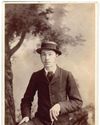
Today’s digital camera users don’t know how lucky they are! Back in the days of film, you had to buy a film colour-balanced for ‘daylight’ and you just put up with whatever colour shifts occurred as the light changed. Pro studio photographers might switch to specialised ’tungsten’ balanced film, but that was about the extent of your choice.
But digital cameras work differently. Their sensors capture all colours equally, but they offer a variety of ‘white balance’ settings so that you can ‘rebalance’ the colour to suit the conditions.
What is white balance?
The name says it all, really. The camera’s white balance system balances the colours so that white is rendered as white, and not with a colour cast from different types of lighting.
This should give you correct, neutral colours whatever the conditions, so that you can use white balance to dial out the yellow/orange colour cast of artificial lighting, for example, or the cold tones of open shadow under a blue sky, or in the light of early dawn. Fixing the white balance fixes all the colours in the scene, in theory at least.
In the days of film, white balance was measured by ‘colour temperature’, which adjusts the colour balance along a red yellow-neutral-blue spectrum. That’s still the case with digital cameras, but these offer a secondary ‘tint’ setting with adjustments along a green-neutral-magenta scale. This does give more accurate colour correction, especially for more complex lighting spectrums like those from fluorescent light, for example, but also makes white balance values a little bit more complicated.
This story is from the {{IssueName}} edition of {{MagazineName}}.
Start your 7-day Magzter GOLD free trial to access thousands of curated premium stories, and 9,000+ magazines and newspapers.
Already a subscriber ? Sign In
This story is from the {{IssueName}} edition of {{MagazineName}}.
Start your 7-day Magzter GOLD free trial to access thousands of curated premium stories, and 9,000+ magazines and newspapers.
Already a subscriber? Sign In

140 years of change
AP has become the world’s oldest surviving consumer photo magazine because we have moved with the times, says Nigel Atherton

Preserving history in platinum
A deep dive into the meticulous art of platinum printing, and the collaboration between the Royal Geographical Society and Salto Ulbeek. Mike Crawford explores how they brought historical photographs to life with enduring beauty and precision

Life in the past lane
What was life like for an amateur photographer in 1884? John Wade takes a trip back in time

Choice cuts
How many trillions of photographs must have been taken in the past 140 years? Amy Davies asked some of our regular contributors for their favourites....a difficult task, to say the least

How good a camera can you buy for just £140?
Three members of the AP team see what they can find for the money

Round Five: The Best of the Rest
The APOY judges choose their favourite images that didn’t make the top ten of our Landscapes category

Amateur Photographer of the Year
Here are the top ten images uploaded to Photocrowd from Round Five, Landscapes, with comments by the AP team and our guest judge

FILM STARS A lifetime of landmarks
Cameras that hit the headlines between then and now. John Wade is your guide

140 years of Amateur Photographer
As AP celebrates its 140th birthday next month, Nigel Atherton looks back at its glorious past

John Wade considers...World War II: Home Front 1940, by A.J O'Brien
Say the word 'Wall's' to those of a certain age and two things spring to mind: sausages and ice cream.